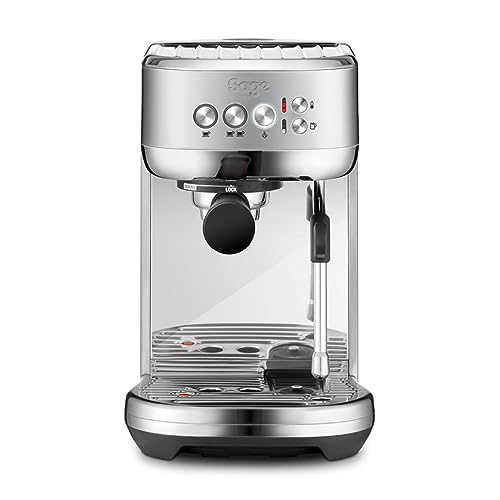How to Use a Coffee and Espresso Maker
A espresso and coffee machine produces shots of water that is extremely pressurized. These are pushed through finely crushed coffee beans that are tightly packed. The result is an intensely flavoured drink with a dense crema that is topped with.
Some machines utilize pods or grounds, allowing you to control how strong your brew is, while other machines can also steam milk for cappuccinos as well as lattes. You can even find a stovetop version that functions like a moka cooker.
1. Buy Guide
The best espresso maker and coffee maker isn't just a device that pours hot water over the grounds. It's also an instrument that can assist you in making the best coffee in your home. The array of choices available in this category can be overwhelming, but there are some things to be aware of when choosing the best machine for your needs.
Understanding the different methods for brewing is the first step. Certain machines employ gravity to filter the water through grounds, while others use a pump. These differences may affect the final flavor and cost.
Although the most sophisticated coffee-and-espresso makers may include digital controls and customizable settings, they're generally the most expensive. It's therefore important to think about how often you'll be using your coffee maker as well as whether the extra costs are worth the added convenience and control.
Semiautomatic models are offered at a lower cost and provide an alternative between manual and automated operation. These machines require manual labor, like grinding and tamping. However they are less expensive than fully automated models and offer a more controlled brewing process.
2. Instructions
Utilizing a coffee or espresso maker is a simple process. The most important step is deciding on the right ingredients and preparing the machine. The ideal method is to make use of fresh coffee beans that have been roasted in a burr machine specifically for espresso. The grinder produces an even, fine powder which releases the best flavors from the bean. You can make use of a steam wand to make cappuccinos and lattes.
Before you make any drinks, it is necessary to turn on the espresso maker and allow it to warm up. It can take up to one hour based on the size of your machine and is necessary for even heating. The process can be speeded up by pulling a blank that is, to run the machine with no grounds in the portafilter. This will not just heat the cup but also flush out the group head in order to prevent a buildup of a dirty drink.
After your machine has been preheated, add ground coffee into the portafilter. Then, you'll need to tamp the grounds to compact them evenly and tightly. You can buy an tamper from the internet or at most espresso shops. When best espresso machine under 500 done you can turn on the machine and place a small cup under each spout. To brew the espresso, simply move the control panel to the espresso position. This triggers the micro-switches which start the pump and the heating chamber, which pushes hot water through the grounds and out of the spouts.
3. Ingredients
A coffee and espresso maker can make a variety of drinks. They are among the most versatile brewing equipment. This is mainly because they can make drip and espresso-based drinks.
Espresso is an intense coffee drink that is produced by pushing hot high-pressure water through finely crushed beans in a very short time. It's often sweeter and a bit more dense than regular coffee. It's a great way for you to get more nuanced flavors than those in drip coffee. But it's not suitable for everyone.
The best espresso is dark-roasted and coarsely ground to maximize flavor extraction. Vigil adds that you should "bloom" your coffee before making it by pouring hot water over the coffee grounds and letting it sit for 20-30 seconds (releases the flavor notes). After adding the rest of the hotwater, you will use the machine's pressure to force the water into the coffee grounds.

Certain machines are better at this than others. This is why some coffee and espresso makers are known for being difficult to use. With a little practice, you will be able to create your own cafe quality espresso in no time.
There are other methods to make almost-espresso without the use of a machine, like with siphons (a fancy glass device that utilizes the vapor pressure to soak the grounds in hot water). This is a time-consuming and time-consuming process.
4. Preparation
Before using your espresso maker, ensure that the machine is plugged in and heated. You want the water to be at the same temperature throughout the brewing process so you can extract the most flavor you can. It's also an excellent idea to "bloom" the grounds of the coffee, or put a small amount hot water over them, for about 30 seconds. This will help release the carbon dioxide from the beans and improve the taste of your espresso.
When the brew is complete, unplug the portafilter and serve. You can make espresso using an espresso maker, to make double and single shots, or use a steam milk frother or wand create popular cafe drinks like lattes and capspuccinos. Add sugar to your espresso for a more decadent, sweeter drink.
You can also use your espresso maker to make the coffee you want but you'll need to use a filter as the majority of models don't have the capacity to brew a complete pot. To make a great pot of coffee, you'll should start with freshly ground beans that have already been ground to the right consistency.
You can also experiment by using different kinds of water. Hard water contains more minerals which can lead to mineral build-up that results in a less tasty brew. Water that is soft or filtered will reduce this buildup.
